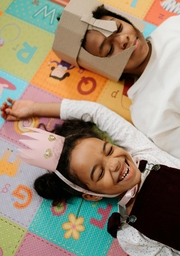4 Creative Activities to Help Kids Understand Their Heritage Through Surnames
It’s common for children to be curious about the stories attached to their last names. It’s this inquisitiveness that really springs up in youngsters of a certain age that you want to foster and encourage. Most importantly, surnames carry a powerful link to your family history, knitting generations together in a way that’s just as powerful as a picture or a home video.
Engaging children in creative activities can transform the discovery of their heritage into an adventure. Here are a few creative ways to fan this flame.
Mapping the Family Moniker
You can get this etymological show on the road with a simple question: So, what is a surname? It’s more than a label, it’s an ancestral sat nav pointing to your family’s origin and occupation.
For this activity, grab a world map and some colored pins. Each child can trace back their surname to its geographical roots and mark it on the map. Did “Williams” originate from an ancestor who was Welsh? Perhaps “East” hailed from, well, the east of the country, the continent or the planet.
As they plot points of origin, you’ll spark conversations about why people adopted these names. This vibrant visual exercise turns history into a detective game. Each pin is a clue to solving the mystery of their past.
The Timeline Tapestry
One of the most compelling ways to visualize history is through a timeline. Constructing a family surname timeline allows kids to follow their ancestral thread through key historical moments.
Begin with the earliest known ancestor with their surname and extend to the present day. Kids can embellish this genealogical journey with drawings or icons representing major life events, such as immigration, inventions, or even encounters with famed figures in history.
Not only does this activity cement chronological understanding, but it also gives each child a tangible sense of their place in the grand narrative of time. As part of this, why not introduce them to historical role models to inspire them. It’s a process that’s even better suited if you share a surname with a significant figure from the past!
Surnames in Script Form
Dramatizing heritage can be as thrilling as it is enlightening. Take the kids on an imaginative leap through time by encouraging them to pen short plays or scenes based on ancestral stories linked to their surnames.
For example, they could reenact a day in the life of an ancestor, incorporating known or researched facts into their dialogue and setting. This hands-on approach allows children not only to understand but also to experience the lives behind their names, fostering empathy and a deep personal connection.
In this context, each surname leaps off the page and onto the living room stage, with kids stepping into their forebears’ shoes—literally, if costumes are involved! This engagement with history stimulates both creativity and historical knowledge while providing a place for family stories to shine in the spotlight (or the beam of your phone torch).
Crests and Crafts
Heraldry, with its vibrant shields and emblems, offers a fascinating glimpse into family identity. And of course, you don’t need to be of aristocratic descent to participate in it. Just ask your little ones to design their own family crest based on the meaning or origin of their surname.
Does their name signify a particular trade, characteristic, or region? Let them express this through symbols, colors, and patterns. They might use gold to represent generosity or an oak tree for strength and endurance.
As part of this, try researching traditional heraldic imagery. And perhaps discovering if there’s an existing family crest. Together, these elements blend artistic expression with historical investigation. This tangible connection to the past serves as a daily reminder when displayed in your home: a personal coat of arms that celebrates the legacy contained within their names.
Final Thoughts
As part of exploring the concepts of heritage and history with your kids, these activities provide a playground for imagination and a bridge to the past. It’s a way of helping kids to enrich their identity and feel more closely tied not only to their relatives, but to the wider culture of the country, so it’s well worth doing.




